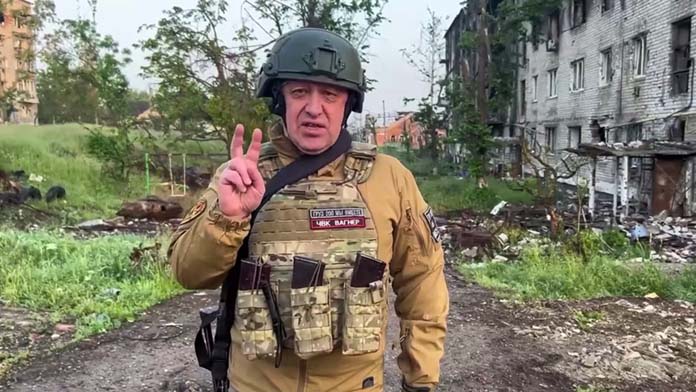The aborted rebellion in June by Yevgeny Prigozhin exposed fractures in Putin’s regime. But this could easily make the war in Ukraine even more dangerous as Western escalation continues.
Western commentators greeted the rebellion as a sign that Putin’s rule was collapsing in the face of the Ukrainian counter-offensive. But despite the damage to Putin’s credibility, it has done little to speed up Ukrainian attempts to reclaim heavily defended territory controlled by Russia in Eastern Ukraine.
The offensive has stalled, with huge loss of life for negligible gains.
But the West remains committed to an ongoing proxy war. The NATO summit saw US President Joe Biden declare the US would support Ukraine “for as long as it takes”, with G7 leaders similarly pledging their “unwavering” support for the war.
The US’s latest move is the shocking decision to provide Ukraine with cluster munitions—brutal offensive weapons designed to shower “bomblets” over a wide area and maximise causalities. The unexploded “bomblets” left behind are notorious for maiming civilians, particularly children, many years after conflicts have ended.
Wagner
Prigozhin is the Russian chief of the Wagner Private Military Company, a mercenary army that has played an increasingly prominent role in Russian war efforts. In May Putin praised Wagner for the leading role its “assault units” played in capturing the city of Bakhmut.
In late June, Prigozhin took to his Telegram channel to denounce an alleged missile attack by the Russian army on one of his camps. He then brazenly declared the start of an armed conflict between Wagner and the Russian Ministry of Defence. Wagner forces seized control of the Russian military hub of Rostov-on-Don with virtually no resistance.
Prigozhin then launched a dramatic “March for Justice” on Moscow. Wagner columns began to move towards the capital with the stated aim of unseating Defence Minister General Sergei Shoigu.
The march on Moscow was ultimately aborted and Prigozhin cut a deal with Putin to go into exile in Belarus.
But the episode has raised questions about the strength of Putin’s control. He held back from launching full-scale attacks on Wagner forces despite his strong-man persona.
In an interview Putin admitted that he met with Prigozhin and Wagner commanders following the rebellion and unsuccessfully tried to negotiate the replacement of Prigozhin as leader of Wagner fighters in Ukraine.
According to the New York Times, following the Russian invasion of Ukraine there were only around 1000 Wagner mercenaries in the country. But Russia’s military set-backs saw Putin encourage Wagner’s growth as a military force outside the full control of the Russian army. Prigozhin was given a free hand to recruit from Russia’s huge prison population and Wagner’s ranks swelled to around 50,000.
Prigozhin rose to prominence as an oligarch who made his fortune selling hot-dogs. He became an associate of Putin after opening a restaurant frequented by the now President.
The Wagner Group was established as an extension of Russian military operations. It status as a private army meant it could be used for “grey zone” operations that the Russian state could distance itself from.
Wagner was first active in the Russian seizure of Crimea in 2014. But it was also used to support Putin’s brutal intervention in the Syrian civil war.
In Africa, Wagner has been used to give Russian imperialism a greater foothold, bolster weak and corrupt governments and seize natural resources.
In Ukraine, Wagner’s growing prominence and Prigozhin’s ambitions began to create tensions.
Prigozhin complained his troops were starved of ammunition by an incompetent and envious Defence Ministry. He began to stridently denounce the incompetence of the Russian defence establishment in public videos. Small skirmishes broke out between Wagner forces and Russian troops.
Prigozhin’s rebellion was finally sparked by a decision to make Wagner forces sign contracts with the Ministry of Defence.
The conflict between Wagner and the Defence Ministry is also entangled with divisions in the Russian state itself. Important figures who have been side-lined in the Russian military and security forces have joined Wagner’s ranks. Former Russian deputy defence minister Colonel General Mizintsev joined Wagner the day after he was sacked by the Ministry of Defence in April.
It is not clear whether the Wagner rebellion was a negotiating tactic or a failed coup. But what is certain is that the war in Ukraine remains bloody and dangerous.
The prospects of a decisive Russian defeat look slim. And if Russian forces did face collapse, Putin could still respond through using nuclear weapons.
An anti-war revolt in East and West is necessary to end the bloodbath and stop the war. Here we need to oppose Albanese pouring fuel on the fire with more arms shipments to Ukraine.
By Adam Adelpour






